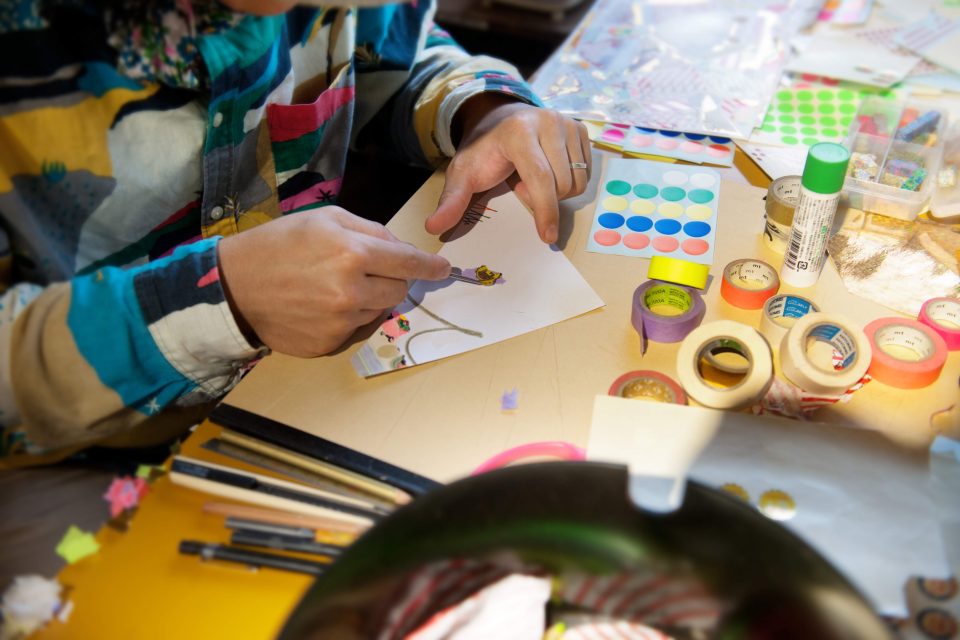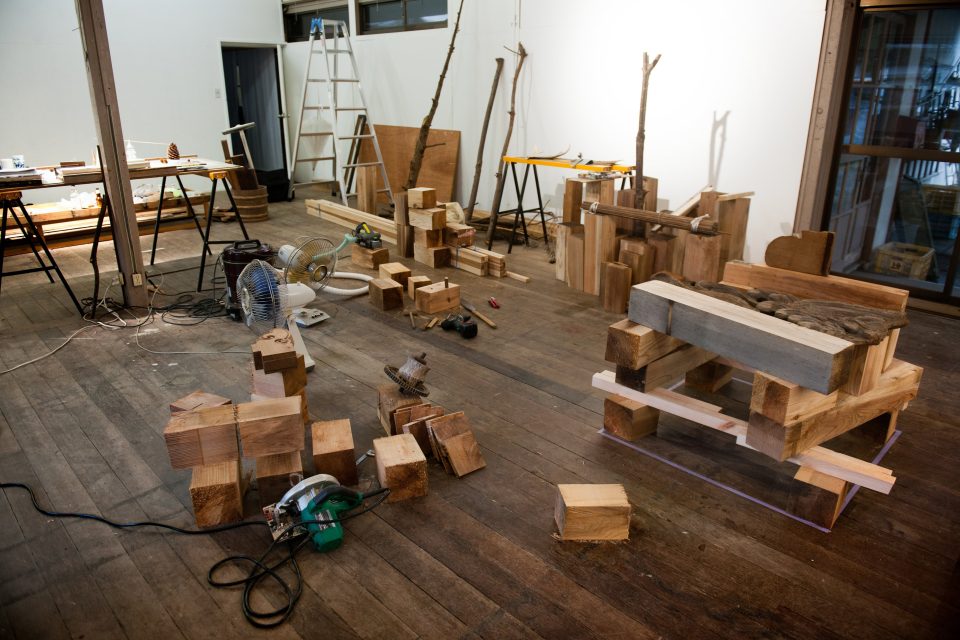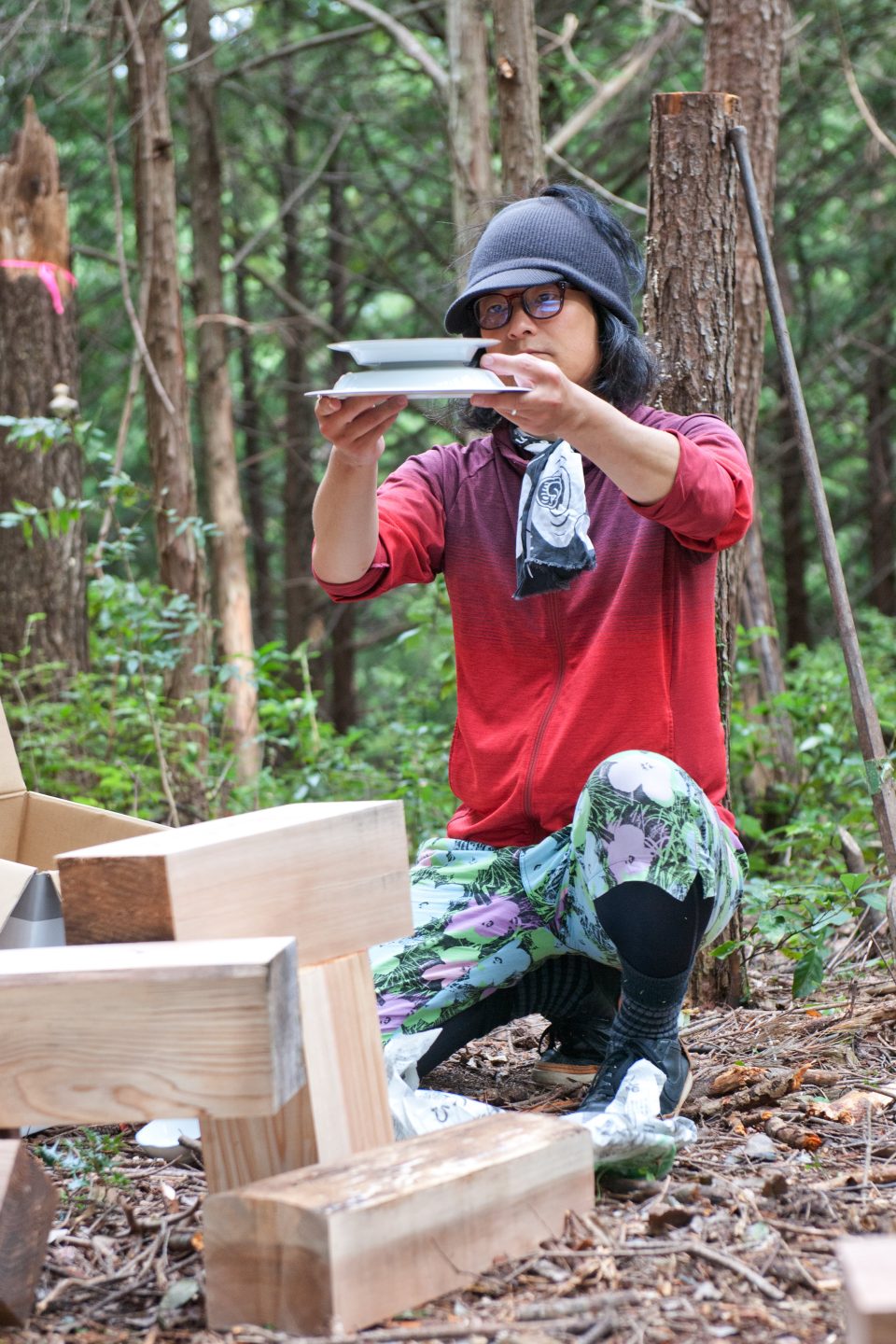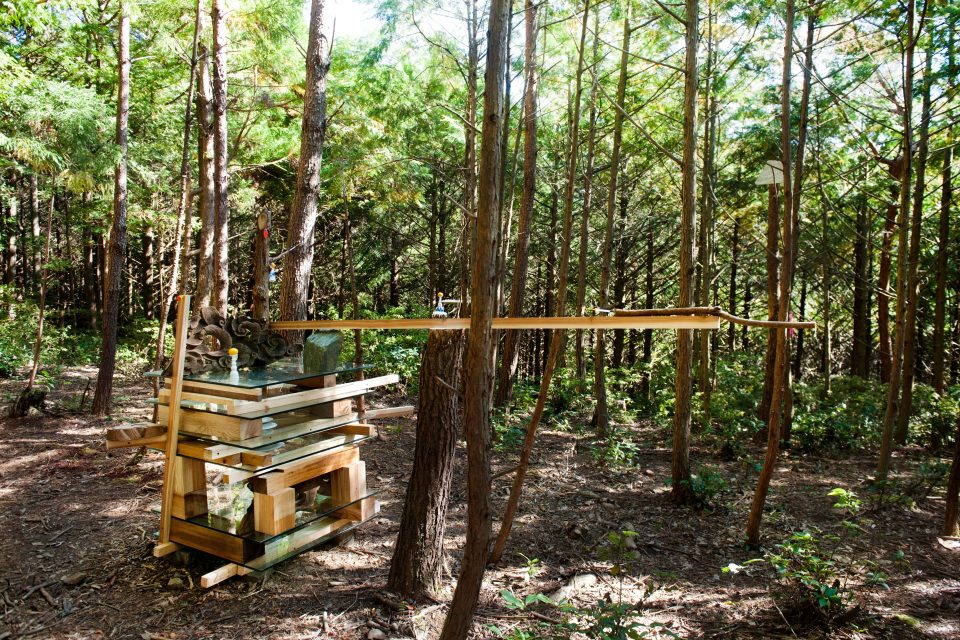
Tetsuro Kano
2019 Kamiyama Artist in Residence Participant
Born 1980, Miyagi. Kano holds a bachelor’s degree from the Department of Environmental Design/City Environmental at Tokyo Zokei University (2005), and a master’s degreee in Fine Art from Tokyo Zokei University (2007). Tetsuro Kano has been creating new “landscapes” by combining ready made objects and plants such as seeds and fruits. In the installation series called Naturplan that he has been working on since 2009, uncontrollable elements such as birds are sometimes thrown into the exhibition space. In his world, objects and space deviate from their original purposes and meanings, and thus our sense of value and recognition are suspended. Kano’s works evoke perceptive potential that we are usually not aware of, as well as an imagination of multiple worlds, which human beings cannot entirely control.
a tree as a city / Dazzled signs
In recent years, Tetsuro Kano has been working on sculptures and architectural installations made with readymade objects and natural materials that explore and present the value and meaning of the existence of non-human beings such as birds and animals and their potential in new environments. Through his process of considering the world’s perception of the existence of plants, birds, animals and so on, Kano continually researches the history and techniques of people involved with nature in forms such as agriculture, horticulture, landscaping, as well as hunting, fishing, and zookeeping. The way hunters and fishers communicate with other living things through traps and lures is a way of imagining things that are unknown to us. The hunting culture and skills that come from these experiences is surely a big clue that assists in understanding the world’s awareness of living things.
At the atrium at the 2 story renovated folk house housing the Mame-chiyo Roastery, I displayed mobile and collage works.
From thick branches to fine mechanics, they are made with a play between different scales in an exploration of a balance of mechanics, color and form. The materials include wood, recycled furnishings, branches, rocks, and readymade items such as old tools and fishing lures. Some items were found in Kamiyama while others I brought in from other lands. The sculpture is built to fit the space. Observing the way it gently sways, the way fine details suddenly reveal themselves is similar to how a single tree will pop out in the woods. If a tree acts as a city for many different forms of life, then one recalls that a forest is not simply a collection of trees.
My two-dimensional works are mainly done with collage. The impressionistic works are inspired by Kamiyama and Shikoku at large. The materials used are readymade holograms, stripes, shiny metallic and fluorescent colors and textures collide and flicker, camouflaging the shapes. The fragmentary portrait is less like a copy of a map and more like a tracing of a map as seen in passing from a car window. Even if the mountain itself is not portrayed, this could be a way to convey the same vibrant impression.
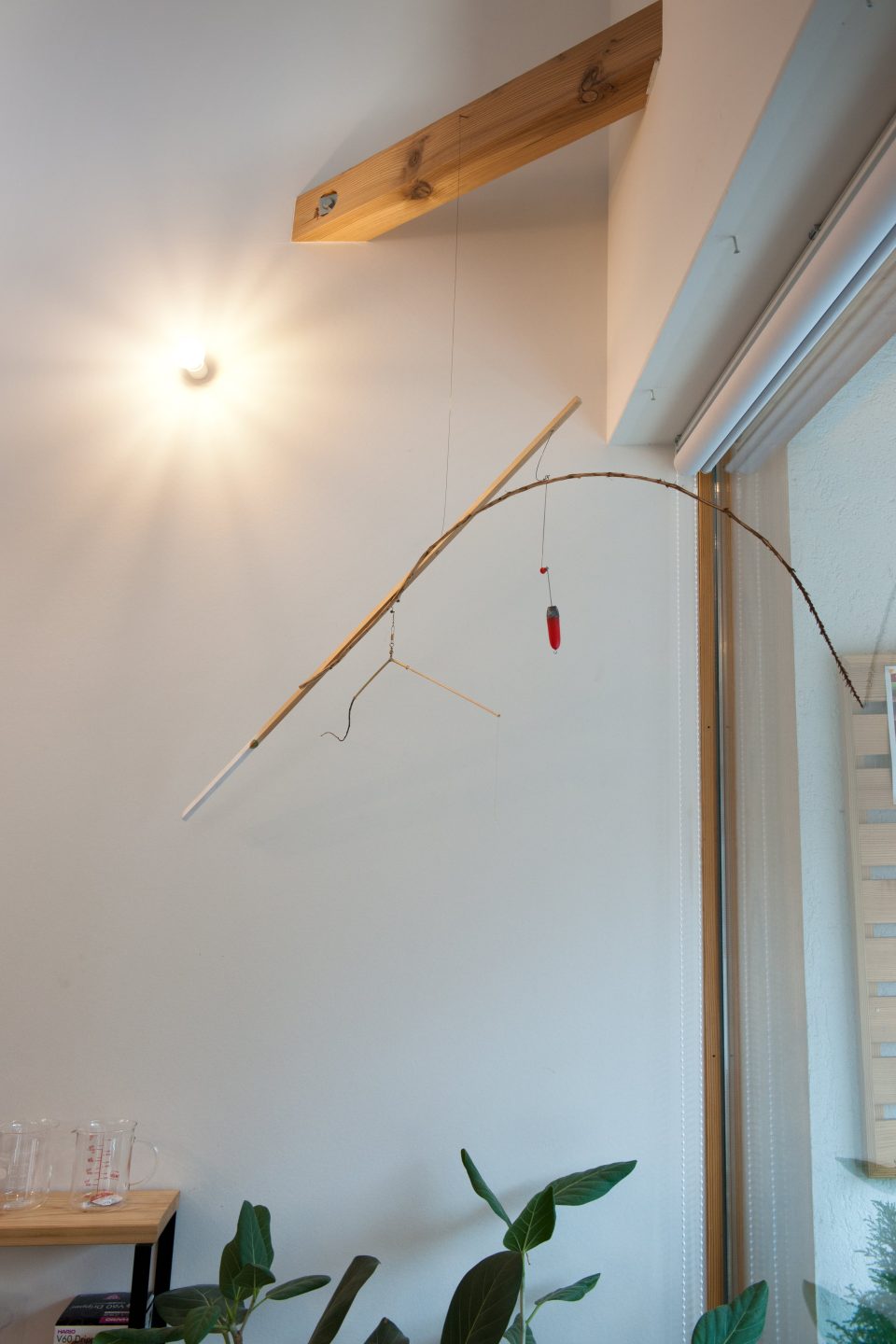
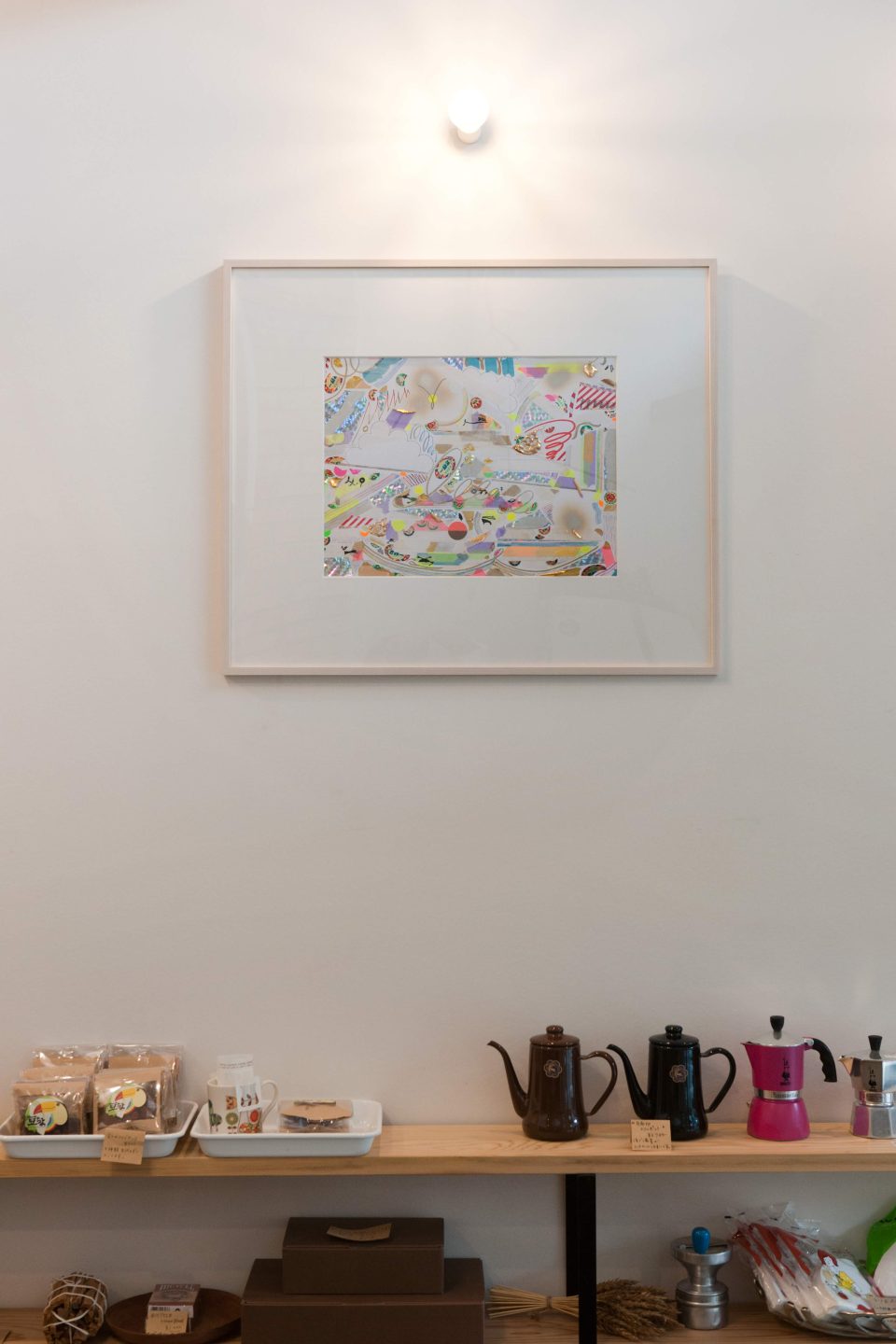
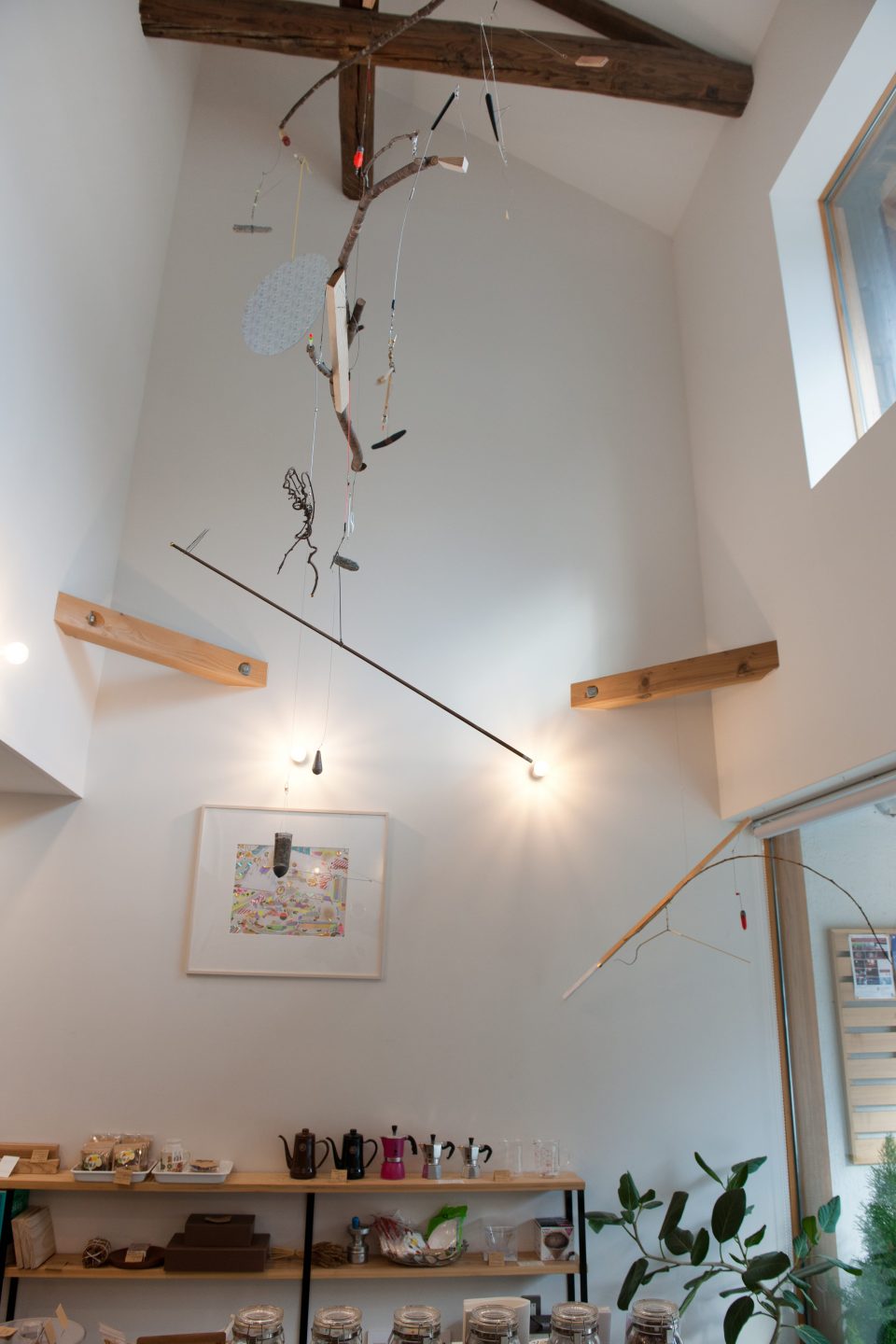
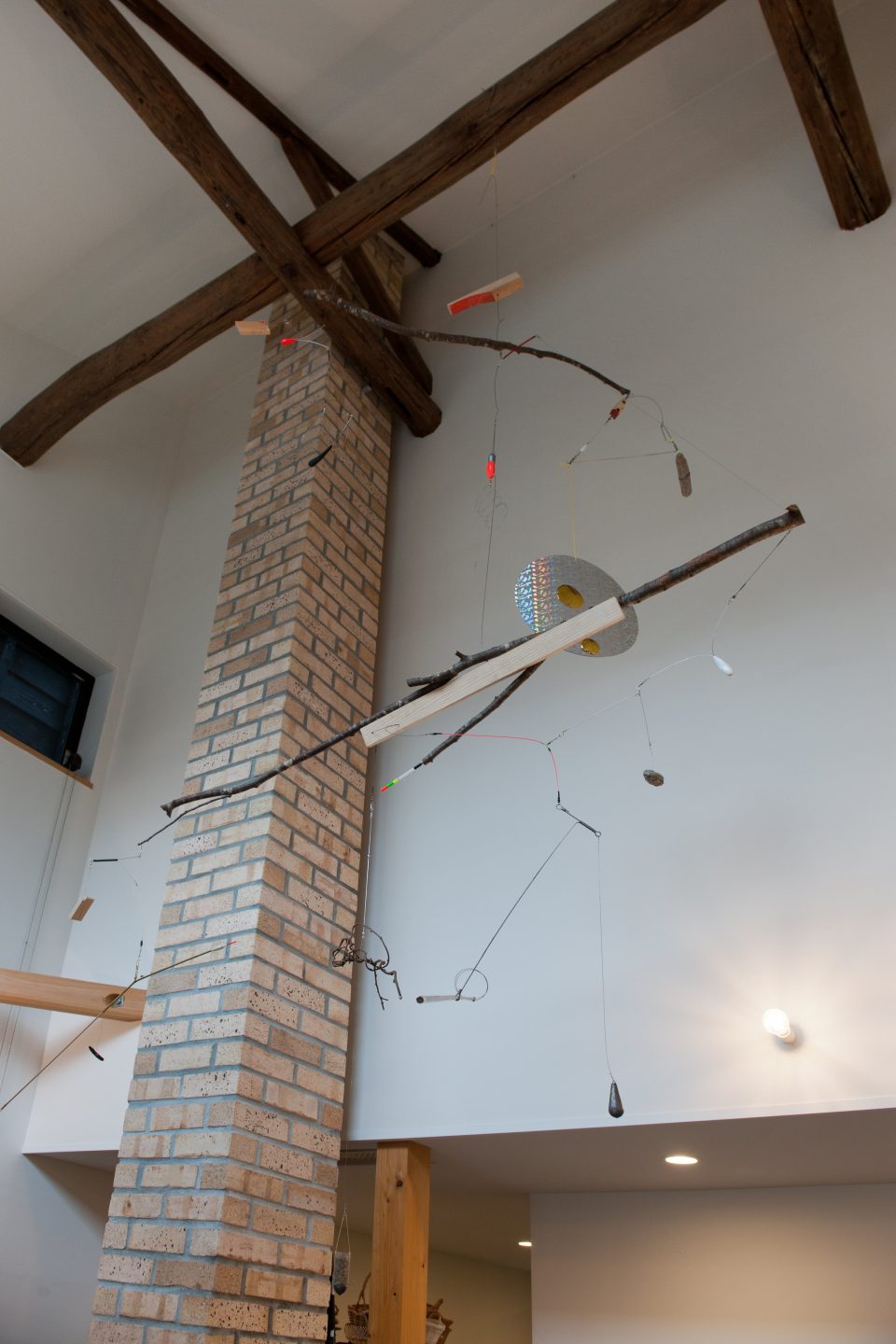
Naturplan
On Mt. Oawa, between standing trees that can be found one level below the shrine at the end of a narrow path, I made an installation of an arrangement of large and small sculptures.
The work was made up of glass, lumber, recycled furnishings, pruned tree branches, rocks, readymade objects like dishes, lures, and old tools, combining things that were found in Kamiyama with things brought from other places, and placed in relation to living trees and tree stumps, with small and large objects, placed in spots high and low. The result was a sculpture and a sort of offering table: inserted into the landscape, with pure colors and forms detached from such things as function and meaning, becoming signs, splints, watering holes and perches.
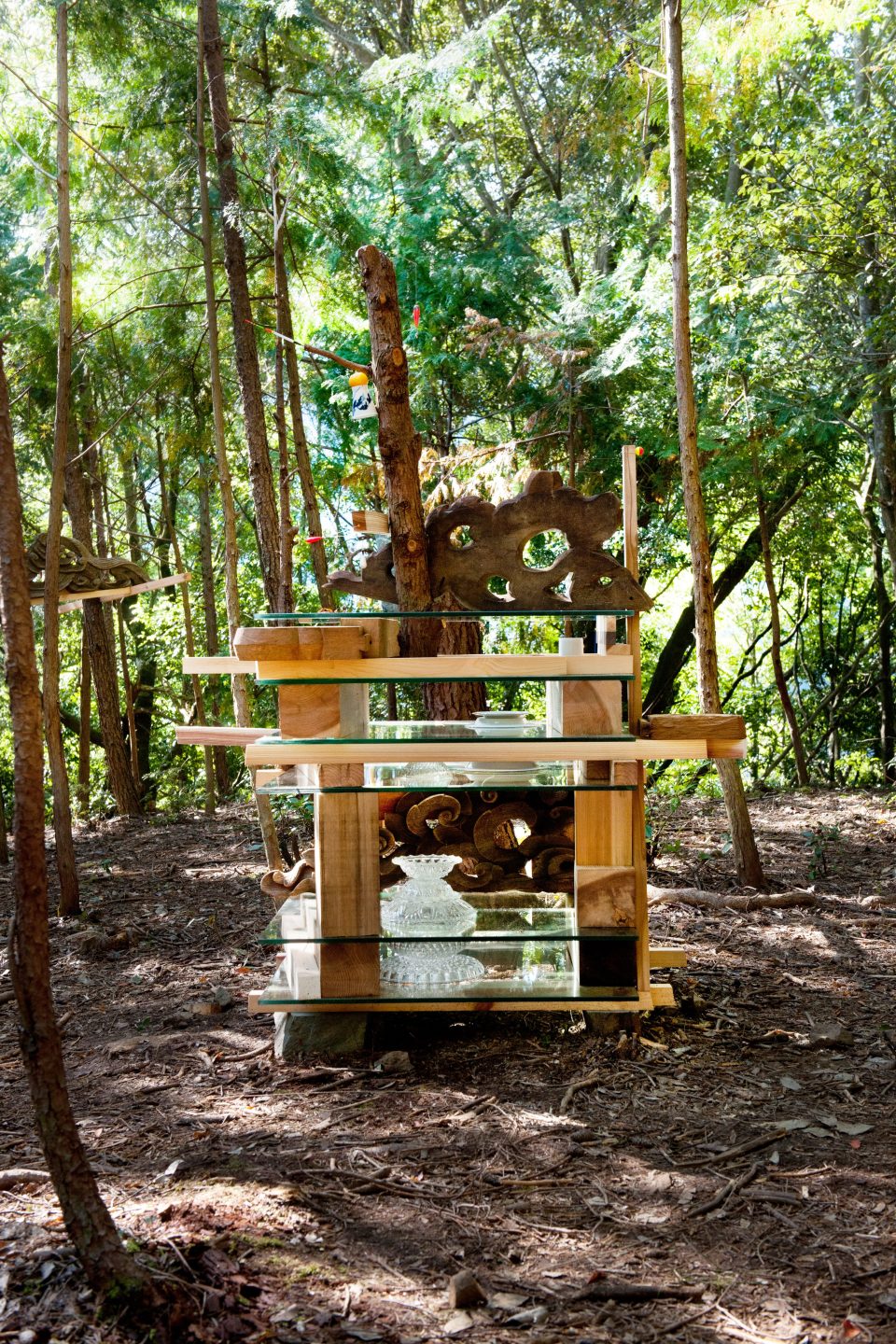
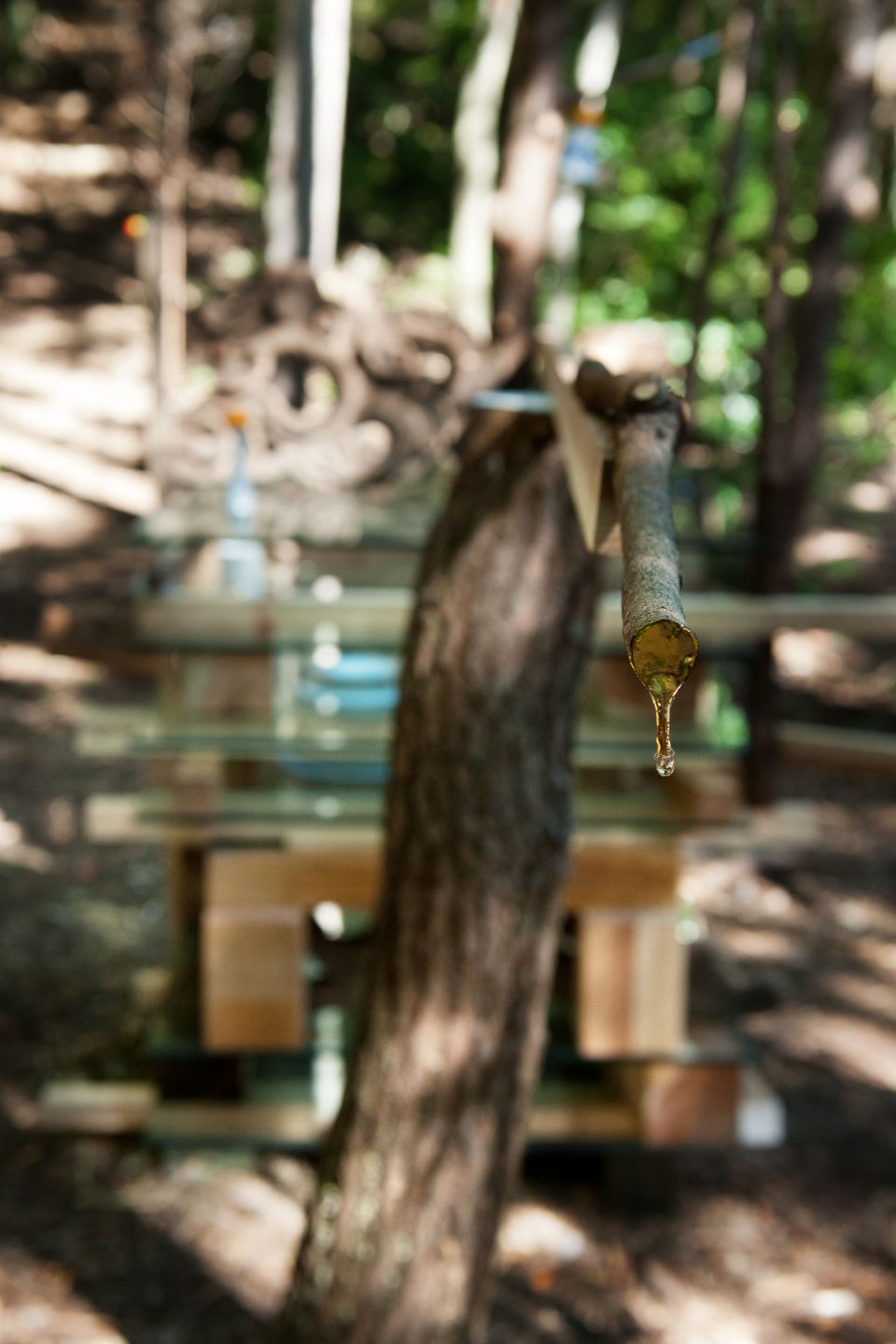
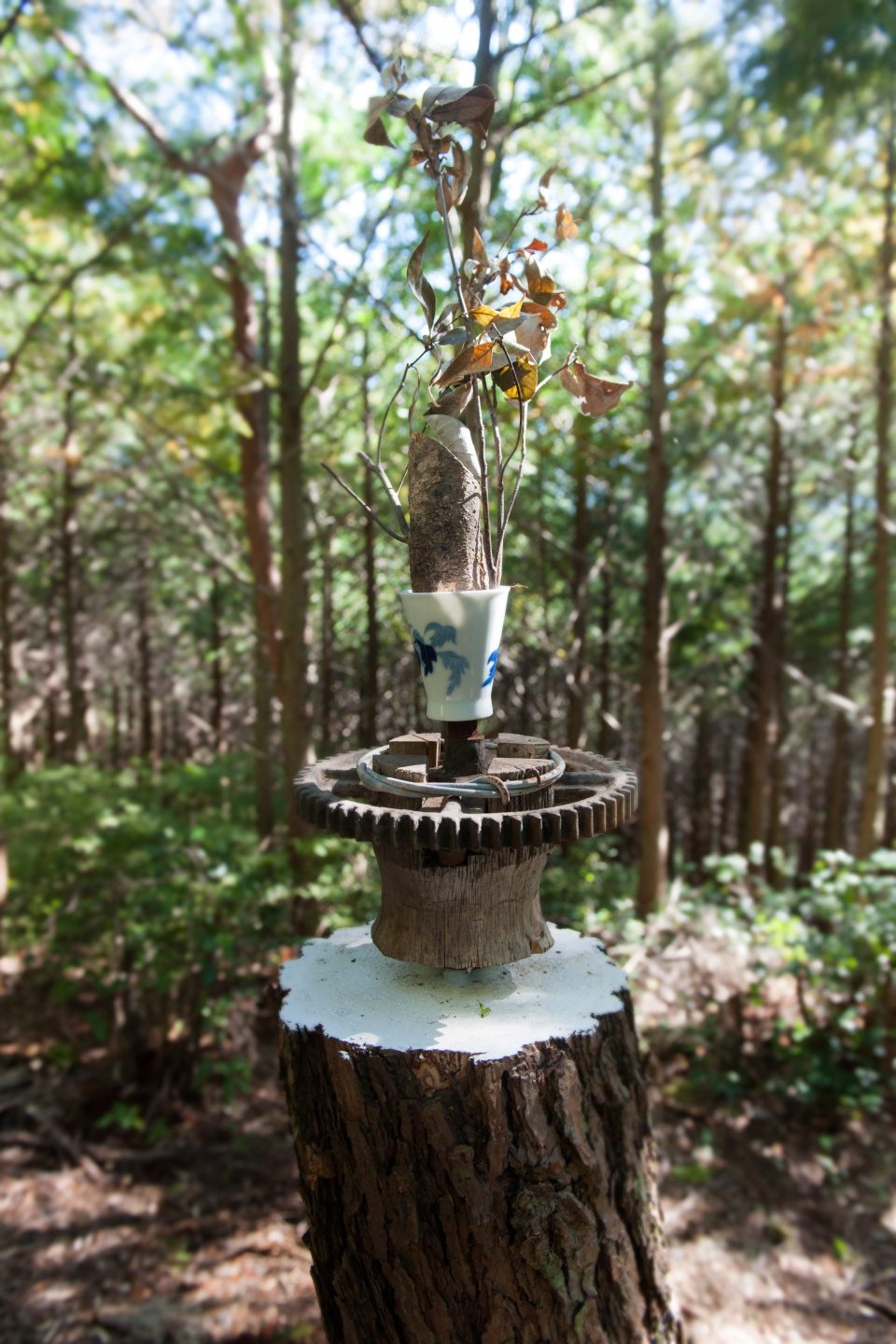
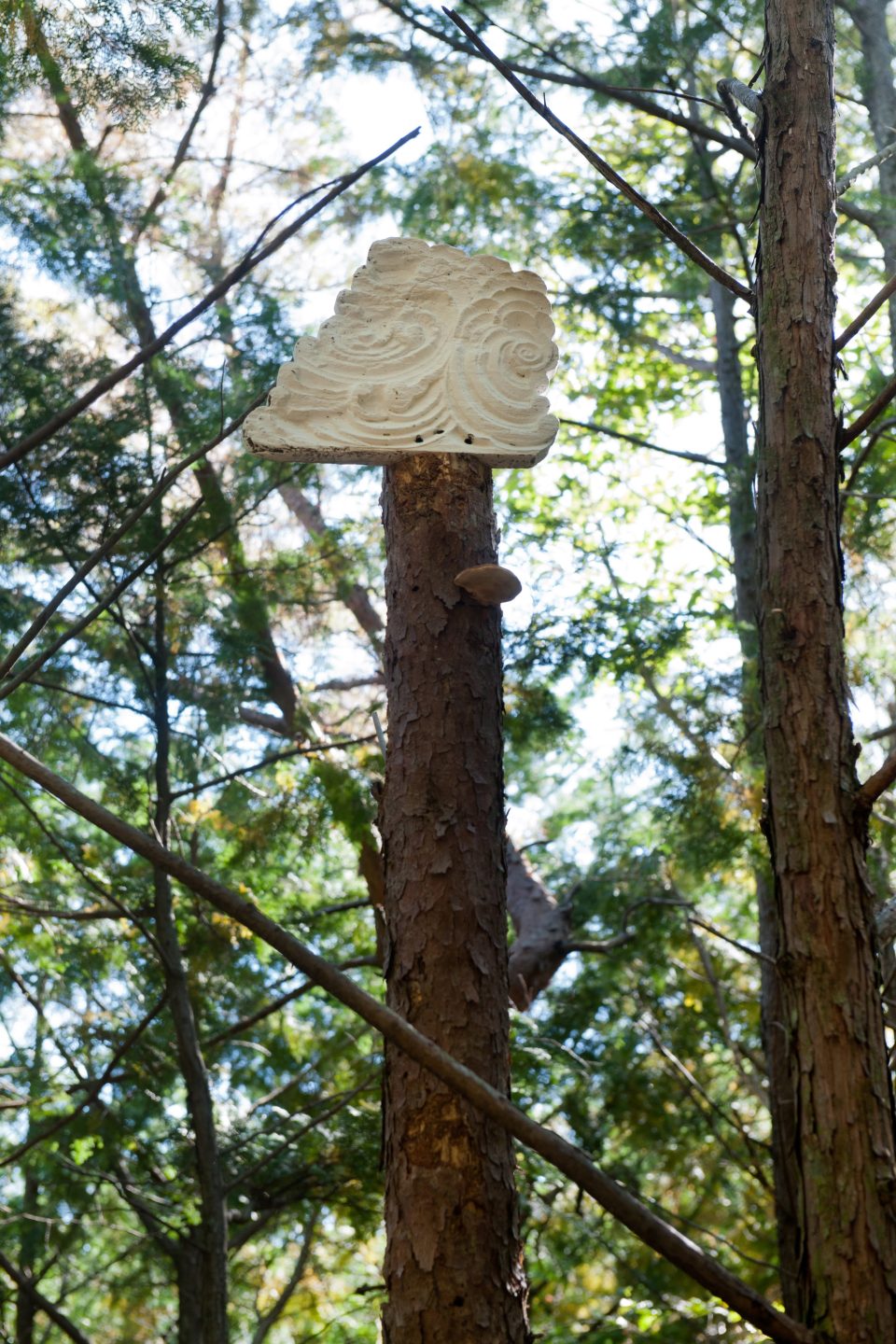
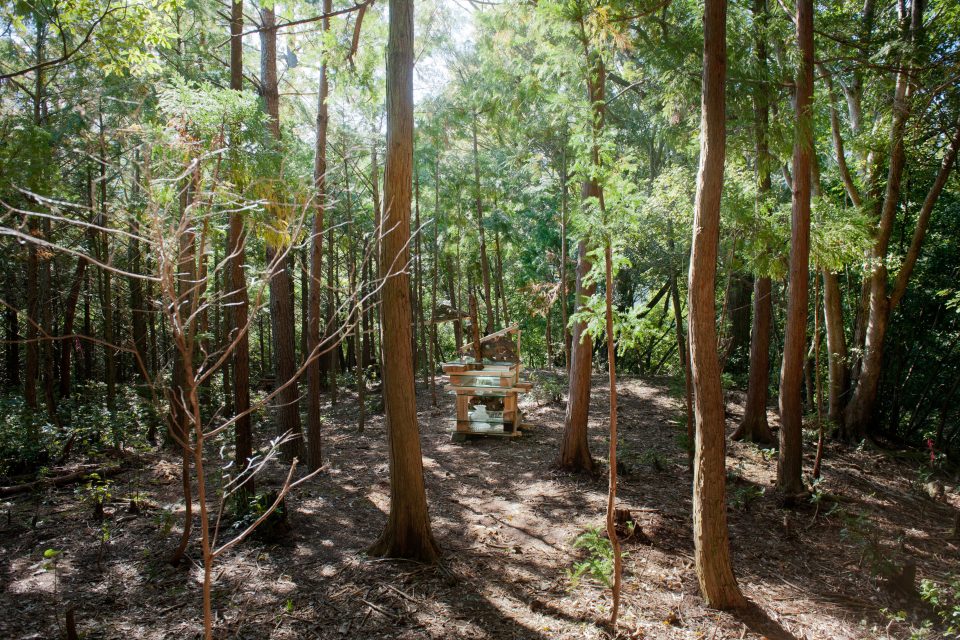
At Itoi Arts, a renovated space inside an old folk house, I presented an installation using ideas and materials that might become details of the work from papers and collections relating to hunting, fishing, and the study of animal behavior.
The installation was like a desk in the middle of a game of looking for connections with Kamiyama, with materials and collections from elsewhere , reflecting details in landscapes viewed during landscape fieldwork on mountain and water control projects, a collection of maps of the locations of bird and animal sanctuaries of the whole of Shikoku in order to see Kamiyama and Kamiyama's relation to its surroundings.
The ambiguity of the relationship in the state of the work before it is complete cannot be clearly verbalized, but certain rules emerge. Putting it on hold, or waiting until the definitive moment comes. Like keeping a hand, or discarding it.
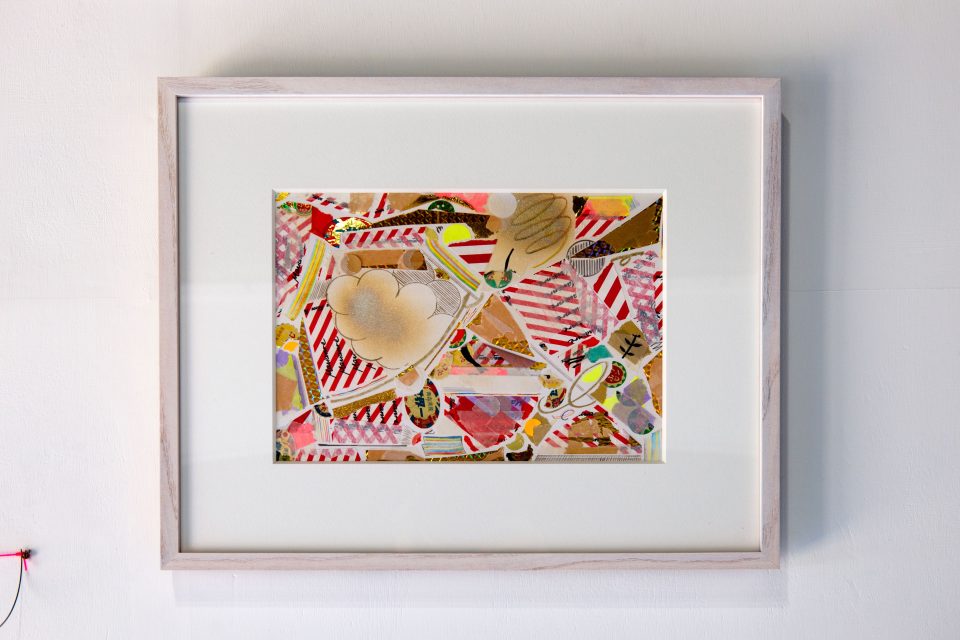
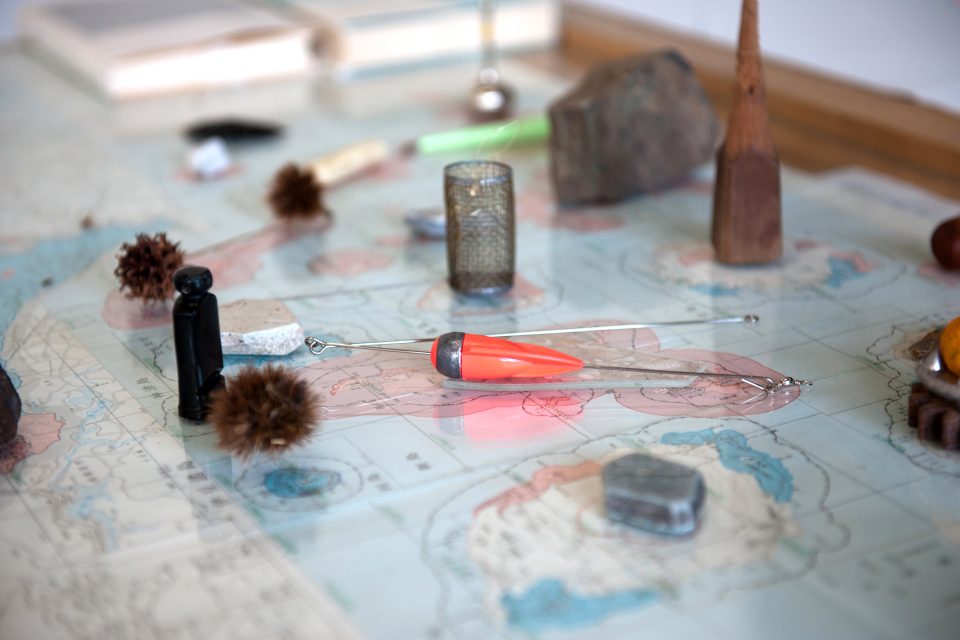
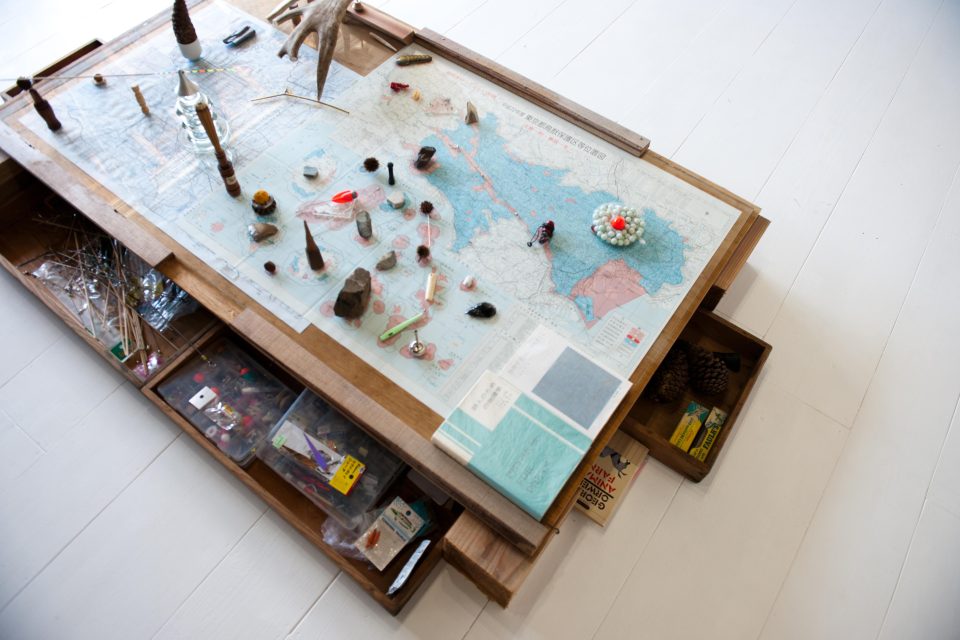
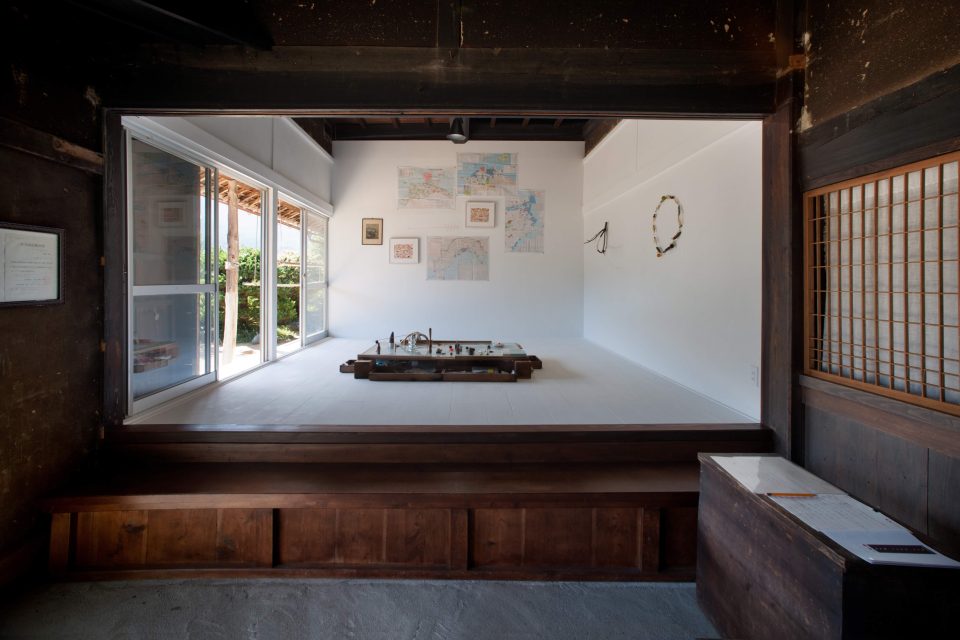
・・・
